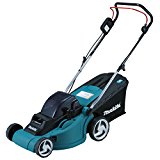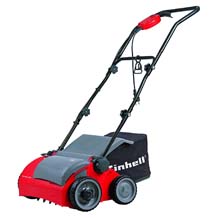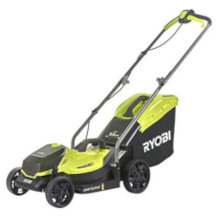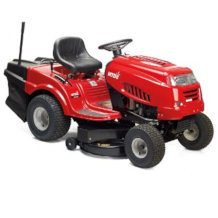Grass seed purchasing advice: how to choose the right product
- What You Need to Know
- Grass seeds are mixtures of seeds from different types of lawns.
- While some varieties are robust and can withstand both football matches and barbecues, others are only intended as ornamental lawns and are therefore rarely walked on.
- You can recognise high-quality grass seeds by the RSM seal.
- Grass seeds are always sold as a mixture, as individual species are more susceptible to pests.
With lawns to perfect garden happiness
For many people, a well-maintained lawn is the showpiece of a garden, if not of the entire property. Alongside flower beds, trees and flowers, the lush greenery on the ground is simply part of the overall look and feel. When creating a garden, you have the choice between rolled turf and grass seed. However, turf is very difficult to lay and also expensive. Therefore, for the majority of garden owners, sowing grass seeds is the first choice.
Grass seeds are mixtures: If you look closely, you can recognise different types of seed. The individual components and their composition are responsible for factors such as tread resistance, dense swards and a beautiful, rich colour.
Unlike seed mixtures used in agriculture, a high yield – i.e. rapid growth – is absolutely not desired in lawns: mixtures that grow back very quickly in the garden require frequent lawn mowing and produce a lot of cuttings. This should be reduced as much as possible by the grass seed mixtures.
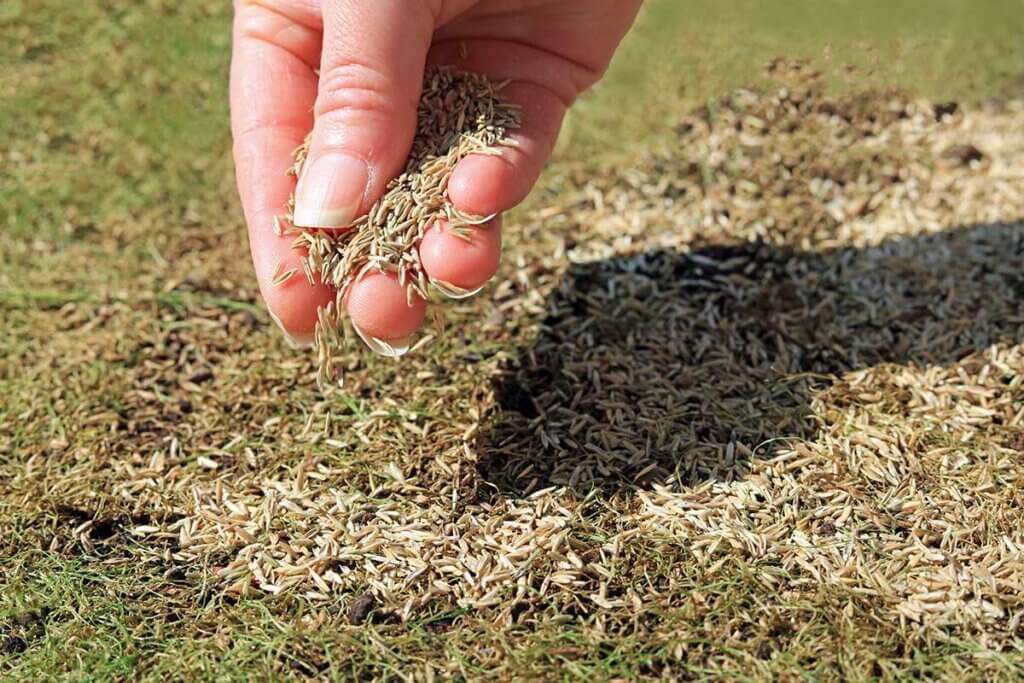
However, the mixtures also reach their limits: There is no compromise between a beautiful ornamental lawn and children who want to play football on it without causing major damage. Therefore, you have to decide between an ornamental lawn and a utility lawn. Well-known utility lawns are, for example, the Game and Sport and Berlin Tiergarten mixtures. The higher the quality of a mixture, the more likely it is to meet both criteria.
Names are usually not protected
When comparing different lawn seed mixtures, you will quickly come across names such as Berliner Tiergarten. But be careful: many of these mixture names are not protected, so you can by no means assume that you are getting a mixture from a brand manufacturer that has been extensively tested before being launched on the market. A pack of Berliner Tiergarten can therefore have a wide range of blends and qualities. Some manufacturers exploit the familiarity of the name by using, for example, inexpensive, fast-growing grass seeds. These do not form a dense scar and are therefore rather unsuitable for lawns. When buying, look for the RSM seal.
Each type of lawn has its own advantages over other types of lawn. Depending on how you want to use your lawn, you should adapt the seed mix accordingly.
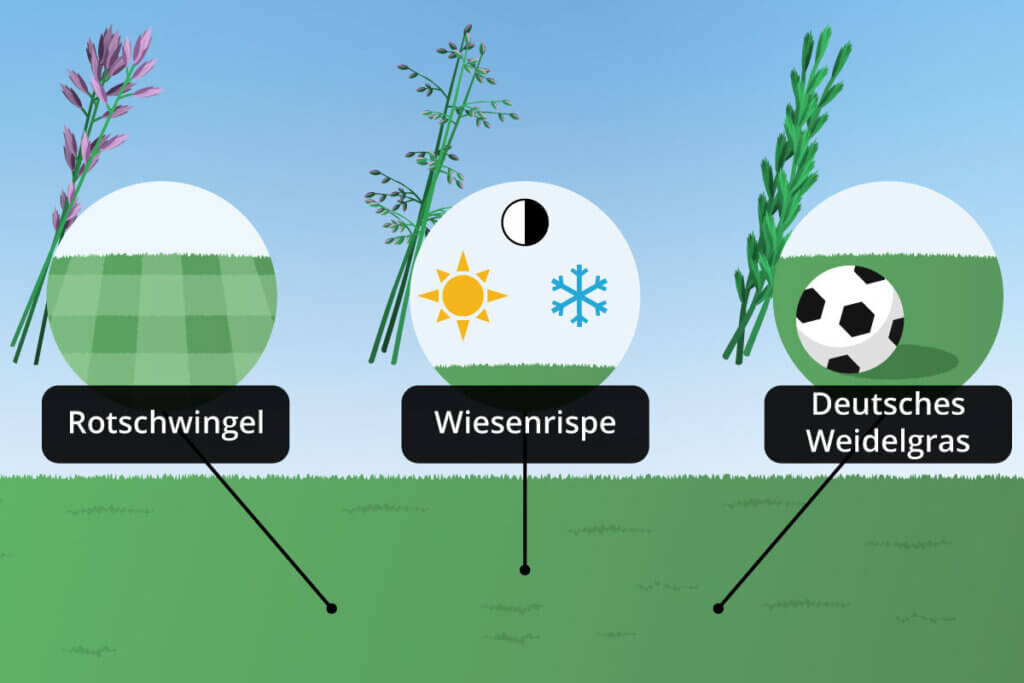
Mixtures are more hard-wearing
Grass seed mixtures with a high quality are easier to maintain and more hard-wearing. Such mixtures contain grasses such as red fescue, Kentucky bluegrass and German ryegrass. The latter grass is considered to be particularly tread-resistant and recovers quickly after wear and tear, which is why it is particularly suitable as a lawn for families. Red fescue grasses develop a dense sward and are particularly suitable for creating an ornamental lawn due to the variety of shapes. Meadowgrass, on the other hand, is added to almost every mixture, as the grass is particularly insensitive to dry periods, partial shade and frost and has a high tread resistance.
Grass seeds for different applications
Due to their different properties, different types of grass or grass mixtures are suitable depending on the intended use. Accordingly, it makes a big difference whether the lawn is primarily nurtured, cared for and hardly walked on, or whether children will be bolting on it regularly.
Pay attention to ingredients and yield
When deciding what to buy, pay attention to the ingredients contained in the lawn mixture as well as the stated yield per square metre. You should also order a little more grass seed than you really need for your garden. This way you can reseed if the lawn has not come up in some places or has been eaten by animals.
Sports and play lawns
Sports and play turf is a resilient all-round mixture, i.e. a lawn that is intended for intensive use in the home. It is therefore suitable if your children or grandchildren want to romp around in the garden and play football, or if you frequently walk on the lawn, for example as a short cut to the neighbour’s house or to the bus stop. This utility lawn also does not mind heavy objects such as flower pots or paddling pools being placed on it in the meantime. Nothing stands in the way of a garden party with many guests with this type of lawn.
Sports and play lawns form an extremely resilient scar – any damage to the lawn regenerates within a short time. Due to the rapid growth of children, however, you also have to mow the lawn comparatively frequently. As a rule of thumb, the lawn seed manufacturer Compo recommends one cut per week during the season between March and October.
Grass seed mixtures called play and sports lawns develop a green area that requires only medium maintenance. In addition, it is usable soon after sowing and forms a dense surface with regular lawn mowing.

Growth is problematic on nutrient-poor, heavily compacted, very watery or very dry soils. The lawn does not thrive well under these conditions. This type of lawn also does not tolerate permanent shade from trees or buildings very well. In these cases, a special shade lawn mixture is recommended, which gets by with less incidence of light.
In summary, sports and play turf is therefore perfect for the whole family – especially when newly sown on the property.
Pro points
- Very hardy
- Formation of a resilient scar
- Fast regeneration of damage
- Medium maintenance
- Can be used shortly after sowing
- Dense surface with regular mowing
Drawbacks
- Unsuitable for shady garden areas
- Regular mowing necessary
Shady lawn
Normal lawn varieties need a lot of light. A special shade lawn is recommended for sections of the garden that are darkened by shadows for longer periods of the day.
Shady or semi-shady conditions prevail, for example, if the lawn is located between many trees or in a courtyard. The garden areas with less light are often cool and damp. To ensure that you get a low-maintenance and even, weed-free lawn even under these conditions, you should use shade grass seed.
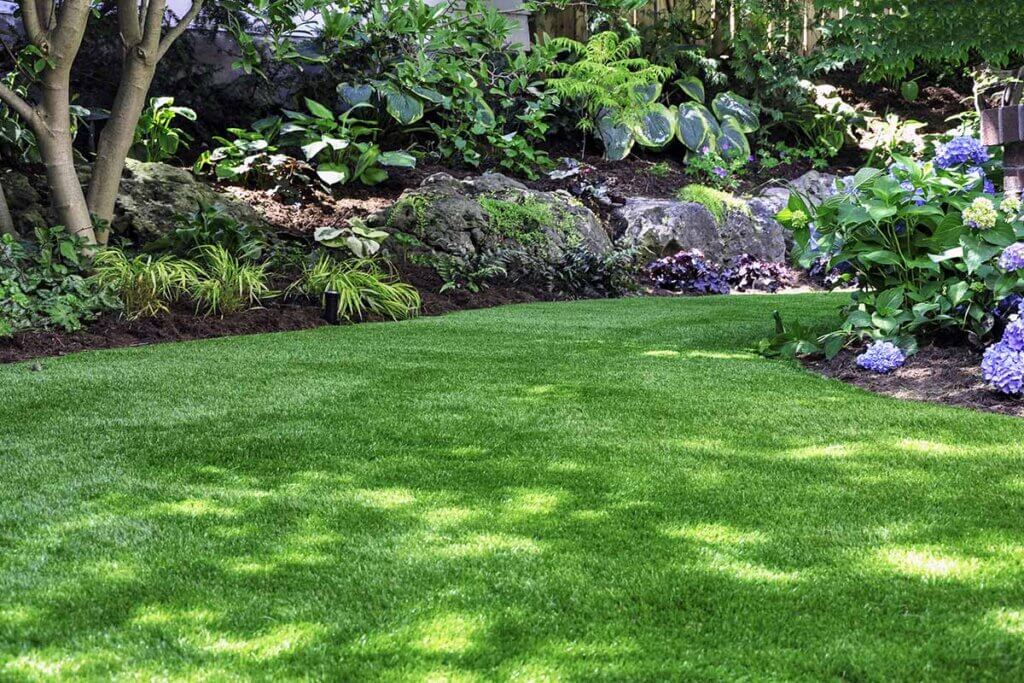
Shade grass is even suitable for sunny garden areas: High-quality shade lawn mixtures also thrive in semi-shady and sunny locations. So if the lawn is in the shade in the morning and in the sun in the evening, the greenery will still thrive. However, the water and fertiliser requirements of lawn types adapted to coolness and wetness can increase somewhat in sunny locations. Otherwise, shade turf combines the advantages of sports and play turf, namely high robustness and medium maintenance requirements, with lower demands in terms of sun exposure.
Pro points
- Thrives even in low sunlight
- Very hardy
- Formation of a resilient scar
- Fast regeneration of damage
- Medium care requirements
- Can be used shortly after sowing
- Dense surface with regular mowing
Drawbacks
- More fertiliser and water required in sunny areas
- Regular mowing necessary
Ornamental lawn
An ornamental lawn is decorative and often the pride and joy of garden owners – but only if the lawn is properly cared for. This greenery, also known as “English lawn”, requires special care. The reward: a lush green that grows very densely and contrasts in colour with ordinary commercial lawns.
Many fine-leaved grasses grow from ornamental lawn seed mixtures after sowing. They are characterised by their dense growth and their bright, lush green. These lawn varieties are often found in large parks or castle gardens, where gardeners take care of their maintenance, because the care required is not to be underestimated.
This stately-looking type of lawn tends not to tolerate rambunctious children, dogs and heavy objects placed on it. Ornamental lawns are also not suitable for regular barbecues with friends and neighbours. Only occasional foot traffic, e.g. for maintenance, is tolerated.
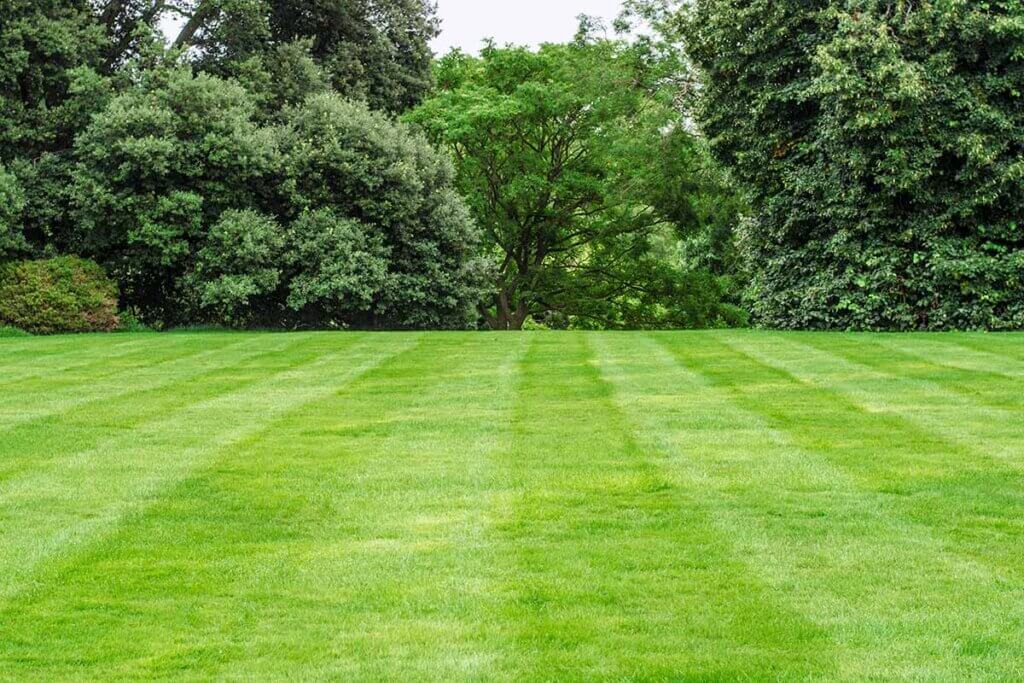
On the subject of maintenance: Regular watering is obligatory, especially in the first growth phase after sowing. With loamy and clayey soils, watering once a week is sufficient. With sandy soils, this is advisable every three to four days, as the soil cannot store moisture so well. A common mistake is to apply water frequently but too little. The noble greenery should also be fertilised three to four times a year to support growth in the best possible way. Weeds and moss should also be removed regularly by hand, otherwise they will spread uncontrollably and disturb the overall appearance of the garden.
The demanding ornamental lawn needs appropriate care. The following tips will help:
- Maintain a cutting height of three to six centimetres.
- Cut back frequently for lush branching of the blades and a rich, green carpet.
- Do not mow when wet
- Water two to three times a week during dry periods
- Treat regularly with mineral fertiliser or mineral-organic fertiliser (except in winter).
Pro points
- Visually the most attractive type of lawn
- Dense growth
Drawbacks
- Comparatively costly maintenance
- Not suitable for romping children and dogs
- Only intended for infrequent use
Flower meadow
Flower meadows are an alternative to dull lawns in the garden. Once sown, they are very low-maintenance: they rarely need to be watered or mown and even do not require fertiliser.
Depending on the season, the areas bloom differently and provide food for bees, bumblebees, butterflies and other insects. By planting a flower meadow, you also contribute to biodiversity and to maintaining the ecological balance. However, since such a flower meadow is only mown about twice a year, it is at best suitable for garden areas that rarely need to be walked on.
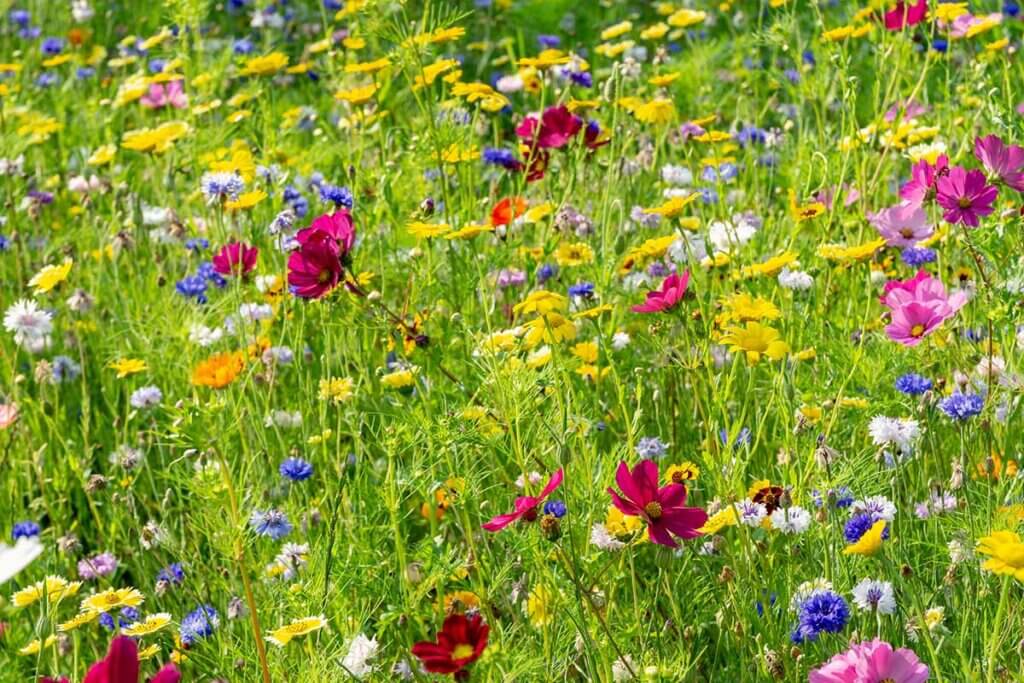
However, in order to be able to admire the floral splendour better, there is nothing to be said against cutting a narrow path with the lawn mower. Creating a small area of about ten square metres of flower meadow next to the lawn also helps nature – it is certainly an eye-catcher for the gardener and the guests.
Pro points
- Less mowing necessary
- No fertilising necessary
- Food for a wide variety of insects
Drawbacks
- Only intended for infrequent use
Finding the right lawn mixture
The selection of grass seeds is sheer confusing. In the following you can read why grass seeds are always mixtures, what the disadvantages of poor quality grass are, how to recognise high quality grass seeds and what they cost.
Why are lawn seeds always mixtures?
Grass seeds of one variety are not sold individually. The reason: monocultures are generally more susceptible to pests, for example fungi. Intermixing allows individual varieties to defend themselves against pests and assert themselves in the garden. This makes it more likely that success will be seen shortly after sowing and also in the long term.
How can I recognise high-quality grass seeds?
There are big differences in the quality of grass seeds, which are often mixtures. Manufacturers often advertise with good-sounding names that are not protected by law. Therefore, when buying, look for the RSM seal. The abbreviation stands for “Regelsaatgutmischung” (standard seed mixture): This is a guideline given by the Forschungsgesellschaft Landschaftsentwicklung und Landschaftsbau e.V. (FLL). (FLL) for the standardised mixing ratio of seeds. This seal is clearly printed on the packaging for consumers and promises high grass seed quality. Grass blades grown from high-quality grass seeds are characterised by drought resistance, tread resistance, runner pattern and dense growth.
What are the disadvantages of poor quality grass seed?
With poor quality seed you get turf that grows quickly but dries out after a short time, at least in places. Overgrowth pushes back high quality turf, causing it to wither. This makes the lawn susceptible to bare patches and weeds. In some cases, the seeds do not even emerge because the mixture contains varieties that do not get along. In addition, the lawn is easily damaged when mowed.
How much does high-quality grass seed cost?
Grass seed is a quality product. You can recognise high-quality lawn seed by the RSM seal. Grass seed of this quality contains only selected grasses and costs between 10 and 15 euros per kilogram.
Tips for sowing lawn seed
Not everyone has a green thumb from an early age. That’s why we give advice below on how to proceed when sowing and what to look out for when choosing grass seeds.
When is the best time to sow grass seed?
Do not sow grass seeds as early as the first rays of sunshine in spring. The soil must no longer be frozen and should have a temperature of at least 10 degrees Celsius so that the small seeds can germinate. Night frost can also prevent germination and mean that you have to reseed. The most important building blocks for successful lawn growth are sun, light and warmth. However, sowing in summer and midsummer is also not recommended: Strong sunlight threatens to burn the sensitive seed, which results in the absence of sprouting green. Spring and early autumn are much more suitable.
What should I bear in mind when sowing for the first time?
If you are seeding a lawn for the first time, it is advisable to use a special lawn fertiliser. The nutrients it contains are optimally suited to the needs of young lawns when reseeding. The growth of roots and leaves is supported and accelerated by an increased phosphate content. Carbonic acid lime can help the lawn grow faster and denser both in the planting phase and later.

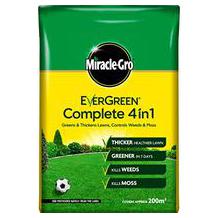
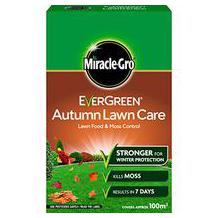
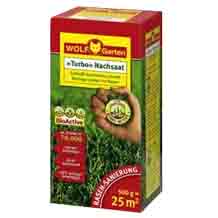
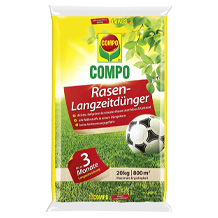
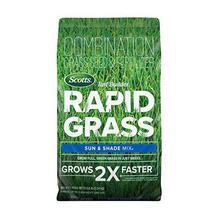
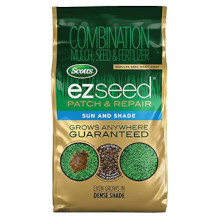
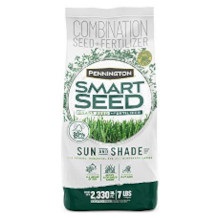
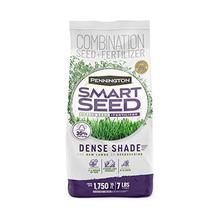


 no reviews
no reviews

